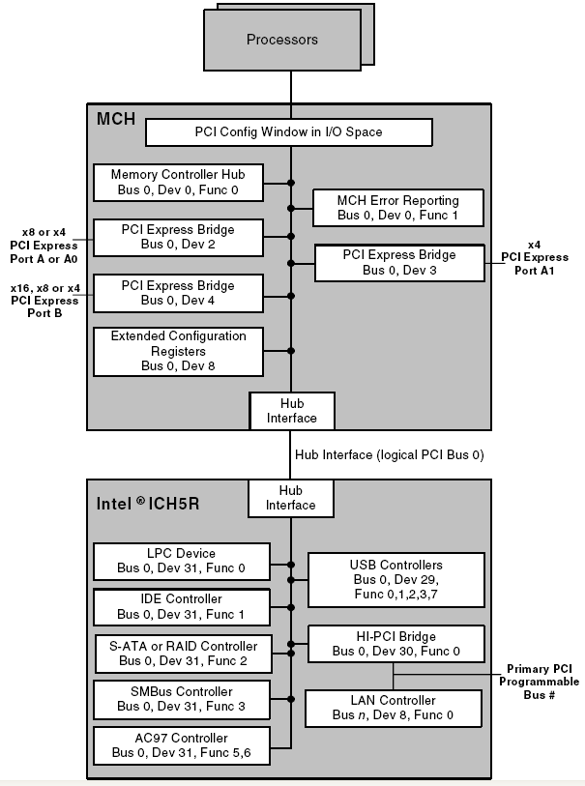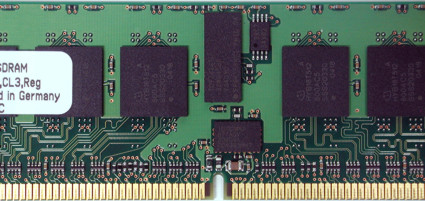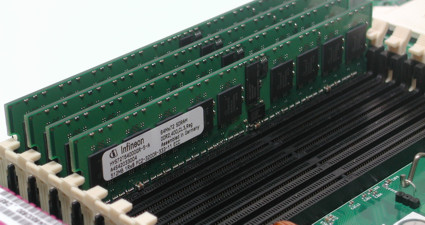AMD's Opteron 250 vs. Intel's Xeon 3.6 GHz in a Workstation Duel of the Elite
Not Downward Compatible
PCI-Express interface block diagram of E7525 chipset
The E7525 is manufactured in 90 nm, contained within a flip-chip BGA-casing (ball grid array) and connected to the motherboard via 1077 balls. The integrated CPU interface now operates at a clockspeed of 200 MHz (FSB800), whereby slower clockspeeds such as 133 MHz (FSB533) are no longer supported. Consequently, an older Xeon Prestonia, although it is pin-compatible, cannot be operated on an E7525 system.
The two-channel memory interface is now capable of working with DDR2 400. Here a conservative path has been taken, as DDR2 533, as registered DRAM and ECC, is still not a Jedec Standard. Moreover, it is still possible to use DDR333 or DDR266, but non-registered DIMMs cannot be operated any more - this was still feasible with the previous chipset, E7505.
DDR2-400 memory modules of Infineon, registered, with ECC - recognizable by the suffix "x72", which stands for the increased number of memory bits.
2 GB random access memory is the required minimum for workstation applications in most cases.
Get Tom's Hardware's best news and in-depth reviews, straight to your inbox.
Current page: Not Downward Compatible
Prev Page Intel's Ideal Platform: E7525 + 6300ESB + 6700PXH + ICH5R + IOP332 Next Page Not Downward Compatible, Continued
Patrick Schmid was the editor-in-chief for Tom's Hardware from 2005 to 2006. He wrote numerous articles on a wide range of hardware topics, including storage, CPUs, and system builds.
-
bgd73 hey thanks for this. There is errors in the test, especially in memory speed of xeons, in fact, it is ridiculous. I am going for older 7525 chipset in CEB motherboard...these machines are just getting started. I be sure to go for HT. thanks.Reply



